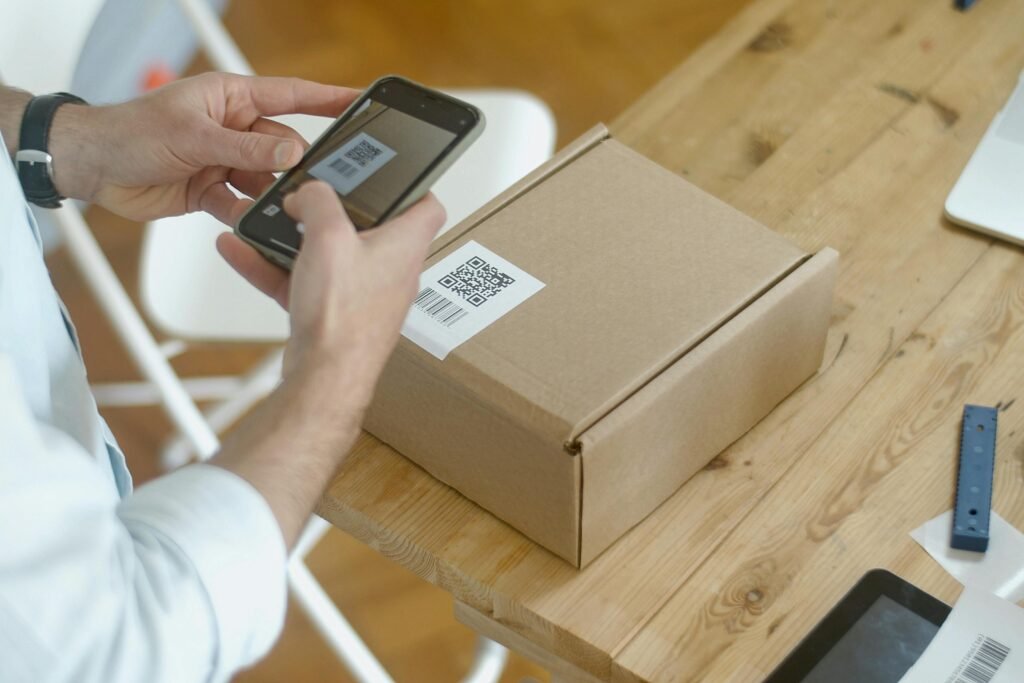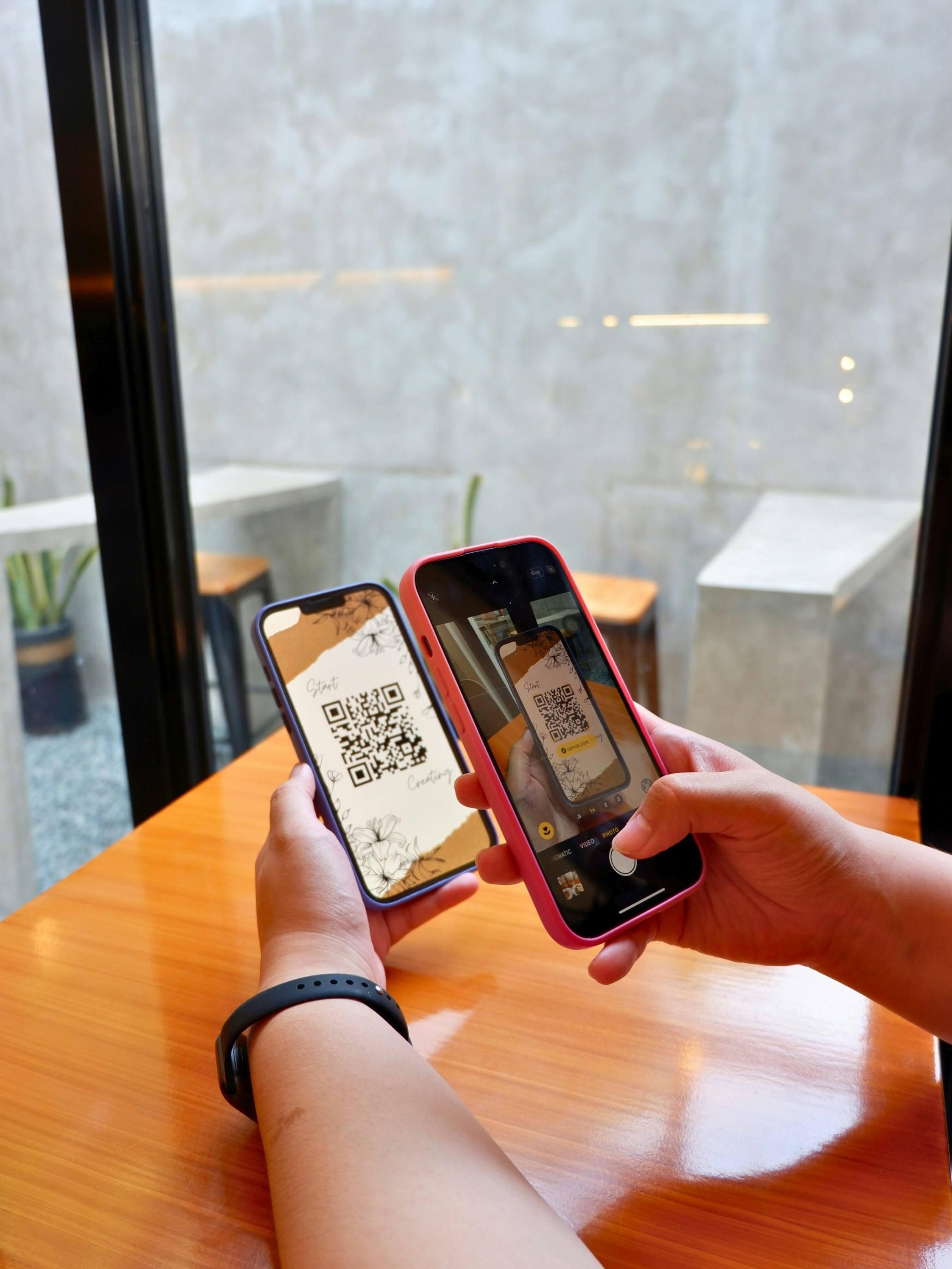Introduction to Barcoding Systems
Barcoding systems play a pivotal role in the realm of modern commerce, serving as a critical tool for efficient product identification and management. These systems utilize printed codes, typically in the form of black-and-white stripes, to convey essential information about products. The advent of barcoding technology has revolutionized how businesses operate, allowing for the swift and accurate tracking of inventory, sales, and logistics.
At their core, barcodes are designed to encode data in a machine-readable format, which can be effortlessly scanned by a barcode reader. This technology has become integral in various industries, from retail to manufacturing, providing a seamless method for identifying products. By employing barcodes, businesses can significantly enhance their operational efficiency, as the scanning process reduces human error and minimizes the time spent on manual data entry. As a result, companies are better equipped to manage their stock levels, ensuring that inventory is replenished timely and accurately.
Additionally, barcoding systems streamline the checkout process in retail environments. Customers benefit from faster service as cashiers can quickly scan items at the point of sale, expediting transactions. This efficiency ultimately leads to improved customer satisfaction and a more organized shopping experience. As we delve deeper into the specifics of barcoding systems, we will focus on two prominent types: the Universal Product Code (UPC) and the European Article Number (EAN). These barcodes serve distinct purposes yet share the common goal of simplifying product identification. Their roles in inventory management and commerce illustrate the broader importance of barcoding systems as essential elements in today’s market.
What is a UPC Code?
The Universal Product Code (UPC) is a widely utilized barcoding system that helps identify products in a standardized manner. Overall, it consists of 12 numeric digits, structured in two primary components: the company prefix and the item reference number. The first six digits denote the manufacturer, while the subsequent six digits identify a specific product produced by that manufacturer. This system allows for efficient tracking and management of inventory within retail environments.
The introduction of the UPC system can be traced back to the early 1970s, when it was developed to simplify the checkout process by allowing for automatic scanning of products. Its inception is a critical development in the retail sector, providing businesses with a method to streamline operations and enhance the customer experience. The first UPC code was scanned on June 26, 1974, at a grocery store in Troy, Ohio, marking a transformative moment in retail practices.
Primarily, UPC codes are prevalent in the United States and have become commonplace in various retail settings. These codes facilitate tasks such as price scanning, inventory tracking, and sales data collection. For example, a UPC code on a cereal box can be scanned at the point of sale, contributing valuable information regarding sales trends and inventory levels to retailers. Additionally, UPC codes are often found on a wide array of consumer products, ranging from food items to electronics, illustrating their vast applicability.
In summary, the UPC code serves as an essential tool within the retail landscape, providing necessary information that assists both businesses and consumers. Its structured format and historical significance highlight its role in enhancing operational efficiency and inventory management.
What is an EAN Code?
The European Article Number (EAN) is a standardized barcoding system primarily utilized in retail and inventory management. Generally comprising 13 digits, the EAN serves as a unique identifier for products sold across various market sectors. The structure of an EAN is designed to encode vital information about the product, including the manufacturer and the type of item, facilitating efficient tracking and sales processes.
Initially established in the 1970s, the EAN system has evolved significantly over the decades. The initial goal was to create a system that could enhance supply chain efficiency and reduce human error in product identification. In context, the EAN scheme has now become synonymous with global trade, allowing companies around the world to sell and manage products seamlessly. Unlike the Universal Product Code (UPC), which primarily serves the North American market, EAN codes have gained wider acceptance and predominance in international markets.
The EAN code is essential for international commerce, as it carries specific information about the country of origin of the product, its manufacturer, and the item itself. This state-of-the-art identification system aids retailers in managing inventory more efficiently and facilitates accurate point-of-sale transactions. Furthermore, EAN codes streamline the logistics of shipping and receiving products, reducing potential delays and errors in inventory processing.
In comparison to UPC codes, which typically consist of 12 digits, EAN codes have found their place in a diverse array of industries, extending their utility beyond retail to areas such as electronics, pharmaceuticals, and food distribution. As a result, understanding the EAN code’s framework and significance is vital for businesses aiming to operate in a global market.
Key Differences Between UPC and EAN
The Universal Product Code (UPC) and the European Article Number (EAN) serve as two crucial barcoding systems widely employed in retail and inventory management. While both codes facilitate product identification, they exhibit distinct differences that cater to various markets and applications.
Geographically, UPC codes are predominantly used in the United States and Canada, whereas EAN codes hold international significance, particularly across Europe and other global markets. This geographic influence affects how businesses adopt each coding system; companies targeting local consumers may lean towards UPC, while those with aspirations for international reach often prefer EAN for its wider acceptance.
The structural differences between these two barcoding systems are also noteworthy. UPC codes consist of 12 digits and are typically formatted with a combination of a company prefix, item reference, and check digit. In contrast, EAN codes feature a 13-digit structure that includes the same elements but accommodates additional numbers for greater product variety and differentiation. Additionally, there are variations within each system. For instance, UPC codes may appear in two formats: UPC-A, which utilizes the complete 12-digit structure, and UPC-E, a condensed version suitable for smaller products. Similarly, EAN codes can exist as EAN-13 or EAN-8, where EAN-8 is more compact and used for products requiring a shorter code.
For businesses, the choice between UPC and EAN can have significant implications for inventory management, retail partnerships, and consumer engagement. Understanding these differences allows companies to select the most suitable barcoding system based on their target market and operational needs. Ultimately, whether a business opts for UPC or EAN, the primary goal remains the seamless identification and tracking of products throughout the supply chain.
Applications of UPC Codes in Retail
Universal Product Code (UPC) codes play a vital role in the retail industry, serving multiple essential functions that streamline operations and enhance customer experiences. One of the primary applications of UPC codes is pricing. Retailers prominently display UPC barcodes on product packaging, enabling automated scanning at checkout points. This practice not only expedites the purchasing process but also minimizes human error in pricing transactions. By utilizing UPC codes, retailers can swiftly adjust prices, run promotions, and ensure accurate sales records.
Inventory control is another critical area where UPC codes demonstrate their value. Retailers use these codes to efficiently track stock levels, manage reorders, and conduct regular inventory audits. For instance, a supermarket chain may implement a UPC-based inventory management system to automatically update stock levels as items are sold. This technology allows businesses to maintain optimal inventory levels, preventing overstocking or stockouts, which can adversely affect sales and customer satisfaction.
Sales tracking is yet another significant application of UPC codes in retail. By analyzing data linked to UPC codes, retailers gain insights into customer purchasing trends, seasonal demands, and product performance. This information is invaluable for making informed decisions regarding product placements, promotions, and marketing strategies. For example, a clothing retailer may analyze UPC data to determine which apparel lines perform best during certain times of the year, enabling targeted advertising campaigns.
Additionally, loss prevention measures are enhanced through the application of UPC codes. Utilizing barcode scanning technology enables retailers to identify discrepancies between recorded sales and actual inventory. By monitoring this data, they can quickly identify potential theft or employee error. Major retailers often employ UPC codes as a line of defense against losses, ensuring greater profitability by maintaining accurate inventory records.
Applications of EAN Codes Globally
The European Article Number (EAN) code, now often referred to as the International Article Number, serves as a critical component in global commerce. Particularly outside of the United States, EAN codes are widely utilized to streamline various processes associated with international trade. One of the primary functions of EAN codes is to ensure that products can be scanned and tracked efficiently throughout the supply chain, facilitating seamless transactions across borders.
In many countries, EAN codes are a requirement for compliance with national and international trade standards. They provide a standardized method for identifying products, which is essential for customs clearance and inventory management. Retailers and distributors globally rely on these codes to manage their stock levels effectively and ensure that products are readily available to consumers. Furthermore, with the rise of e-commerce, the importance of EAN codes has increased, as they enable online platforms to manage extensive inventories across various geographic locations.
Several industries demonstrate the broad applicability of EAN codes. For instance, the food and beverage sector uses these codes to track perishable goods, ensuring that items are fresh and comply with safety regulations. In the pharmaceutical industry, EAN codes help maintain the traceability of medications, enhancing quality control and minimizing the risk of counterfeit products entering the market. Retail giants such as Aldi and Tesco have adopted EAN codes for their inventory systems, facilitating smoother operations across their global networks.
Because of their widespread recognition and use, EAN codes play a pivotal role in international commerce. The harmonization of product identification through these codes promotes not only operational efficiency but also fosters consumer trust, ultimately benefiting stakeholders across the supply chain.
Choosing Between UPC and EAN for Your Business
When determining the suitable barcoding system for your business, the two main contenders are Universal Product Codes (UPC) and European Article Numbers (EAN). The decision primarily hinges on your target market, product distribution methods, and operational needs. Businesses planning to operate predominantly in North America might find UPC codes more beneficial, as they are the standard in this region. Meanwhile, if your products are set for international sales, particularly in Europe, you should consider implementing EAN codes. These barcode systems serve specific geographical markets and market compatibility is a critical factor in your choice.
Another essential aspect to consider is retailer requirements. Many large retailers have specific preferences for the types of barcodes they accept. For instance, if your products are designed for local grocery chains or mass-market retailers in the U.S. market, UPC codes may be the requisite choice. On the other hand, if you aim to distribute internationally or work with retailers across Europe, EAN codes would be more appropriate. Understanding your distribution channels and the requirements of your potential retail partners will be crucial in selecting the right barcode format.
Furthermore, businesses should assess their operational needs, including inventory management and sales tracking. UPC codes are generally used for retail sales and can be integrated seamlessly into inventory management systems designed for U.S.-based businesses. Conversely, EAN codes are versatile and can cater to a broader range of distribution methods. Lastly, it is essential to obtain the appropriate barcodes from a recognized source such as GS1, ensuring legitimacy and compliance. This step will inevitably facilitate smoother operations and foster trust with trading partners and customers alike, thereby enhancing overall business performance.
Challenges and Considerations in Barcoding
Businesses leveraging barcoding systems such as UPC (Universal Product Code) and EAN (European Article Number) may encounter several challenges that can impact their efficiency and success. One primary concern is mislabeling. Incorrect application of UPC or EAN codes can result in significant disruptions in inventory management and sales processes. For instance, if the barcodes do not correspond to the correct products, it might lead to confusion in the supply chain, causing delays and potential revenue loss. It is essential for businesses to ensure that their barcoding practices are meticulously monitored to mitigate these risks.
An additional obstacle that businesses may face is barcode scanning issues. Variability in scanning devices or poor-quality barcodes can lead to difficulties in retrieving product information. This problem may display itself through slow checkouts or inaccurate inventory counts, ultimately affecting customer satisfaction. To address this concern, organizations should invest in high-quality barcode printers and regular maintenance of scanning equipment to ensure optimal performance. Implementing a rigorous testing process for codes before they are deployed can also catch potential errors early.
Cost considerations associated with barcode registration present another challenge. Obtaining UPC or EAN codes often entails fees for registration and ongoing compliance. While the investment can yield significant benefits in terms of product traceability and market access, businesses should assess their budget and plan accordingly. Engaging with experienced barcode service providers can provide insights into cost-effective solutions that align with their operational needs.
In conclusion, to successfully navigate these challenges, it is imperative for businesses to prioritize careful implementation and adherence to barcoding standards. By investing in proper training, quality tools, and effective management practices, organizations can enhance their barcoding initiatives, ensuring improved accuracy and efficiency in operations.
Future Trends in Barcoding Technology
As technology continues to advance, the landscape of barcoding is undergoing significant transformation, particularly with the rise of new formats and scanning technologies. One notable trend is the increasing adoption of QR codes. Unlike traditional UPC (Universal Product Code) and EAN (European Article Number) systems, which primarily encode numeric data for retail products, QR codes can store a variety of information, including URLs, text, and images. This expanded capability enables businesses to engage consumers in richer ways, facilitating enhanced marketing strategies and interactive experiences.
Moreover, the development of digital tag technologies is also gaining momentum. Digital tags, which utilize RFID (Radio-Frequency Identification) and NFC (Near Field Communication), offer businesses real-time data capture and inventory management. These tags may provide advantages over UPC and EAN codes, such as greater data storage capacity and the ability to track products throughout the supply chain more effectively. As these technologies become more standardized and cost-effective, it is likely they will complement or even replace traditional barcodes in specific applications.
Advancements in mobile scanning capabilities further contribute to the evolution of barcoding systems. Modern smartphones equipped with high-resolution cameras can effortlessly scan both UPC and EAN codes, as well as emerging formats like QR codes. These advancements mean fewer barriers to accessing product information for consumers, resulting in a more seamless shopping experience. Businesses looking to stay competitive will need to consider integrating these technologies into their operations, leveraging mobile scanning for inventory management and customer engagement.
In conclusion, as we look to the future of barcoding technology, it is essential to recognize the potential impact these advancements may have on traditional UPC and EAN systems. The integration of QR codes, digital tags, and improved mobile scanning capabilities presents opportunities to enhance efficiency and consumer interaction, positioning businesses for success in an increasingly digital marketplace.
© barcodly.com- All rights reserved





